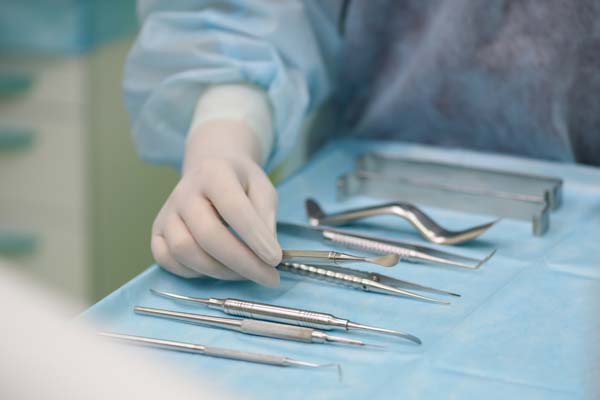The Importance of a Sinus Lift Procedure

A sinus lift procedure goes by many other names, including sinus elevation, sinus augmentation, and sinus graft. It can be an important step in the process of having a dental implant placed in the upper jaw to replace a missing tooth. The procedure involves raising the floor of one of the maxillary sinuses and filling in the space that is left behind with bone graft material. Following a process of osseointegration over several months, the augmented portion of the jawbone becomes thicker and denser than it was before.
Why is a sinus lift performed?
A sinus augmentation is performed to restore bone density to the jawbone. Bone density may be lost due to periodontal disease, cancer, birth defects, or resorption of calcium following the loss of a tooth.
Sometimes a sinus lift is performed to correct a problem with the sinuses being too close to the jaw or the height of the jawbone being too short. Often, a sinus elevation is performed in preparation for the placement of a dental implant to replace a tooth that has been lost. The implant needs dense, strong bone to support it or it could fail.
How is a sinus lift performed?
The process usually begins with imaging to evaluate the structures in the skull and the health of the jawbone. This may involve X-rays or a computed tomography scan.
There are several different possible techniques by which a sinus elevation can be performed. Your oral surgeon will discuss these with you and make a recommendation based on your condition. One common technique involves cutting a small disk of bone and raising it up into the sinus cavity. Another involves cutting the bone to create a moveable flap.
In either case, the space remaining after the segment of the bone has been cut and elevated is filled in with bone graft material. This can come from several different sources. An autograft involves osseous material harvested from somewhere else in your body where the bone is both dense and easily accessible. A xenograft comes from the bones of animals, while an allograft comes from a human cadaver. All of these materials are safe and effective.
Reaching the jawbone to perform the elevation and place the grafting material requires an incision into the gums. Once the sinus lift has taken place, the gums are sutured back together. You should not feel anything during the procedure because the surgeon will numb the area prior to making any incisions.
If you are having the sinus augmentation performed to support a dental implant, it may be possible to place the implant at the same time as the grafting. However, more often you must wait until the bone graft has had time to integrate completely with the jaw, a process that can take several months.
Conclusion
A sinus lift is performed to restore proper bone density and thickness to the upper jaw. This may be the extent of the treatment, or it may be performed in preparation for a dental implant so that the jaw becomes strong enough to support it.
Contact our office to schedule a consultation to determine whether you are a candidate for oral surgery to elevate the sinus floor and strengthen the upper jaw.
Request an appointment here: https://monroe.premieroralsurgeryct.com or call Premier Oral Surgery & Implantology Center at (475) 474-6204 for an appointment in our Monroe office.
Check out what others are saying about our services on Yelp: Read our Yelp reviews.
Related Posts
We use PRF treatment to make oral surgery easier for patients and give them better outcomes. This therapy uses the body's regenerative power to help speed healing and prevent infections during and after surgical procedures. PRF stands for platelet-rich fibrin, made from the patient's blood in a simple procedure. This article looks closely at PRF…
Learning that you need an apicoectomy can cause anxiety. This procedure is a level higher than a root canal. Understanding this endodontic surgery can help you prepare for your upcoming appointment. Here are the things that you need to know about an apicoectomy.Research shows that dental roots are complicated structures. Bacteria invading the root branches…
Surgical tooth extractions are more complicated than ordinary dental extractions. These procedures need a higher level of experience and skill. That is why an oral surgeon is the right dental provider to perform them. Knowing when surgical tooth extractions are necessary can help prepare you for your upcoming treatment.The oral surgeon will assess the tooth…
The American Dental Association defines oral pathology as a field of dentistry that deals with the illnesses of the mouth. Identifying and managing these diseases is crucial in achieving oral and general health. Understanding this type of pathology can prepare you for your treatment. Here are the key insights patients like you must consider about…
